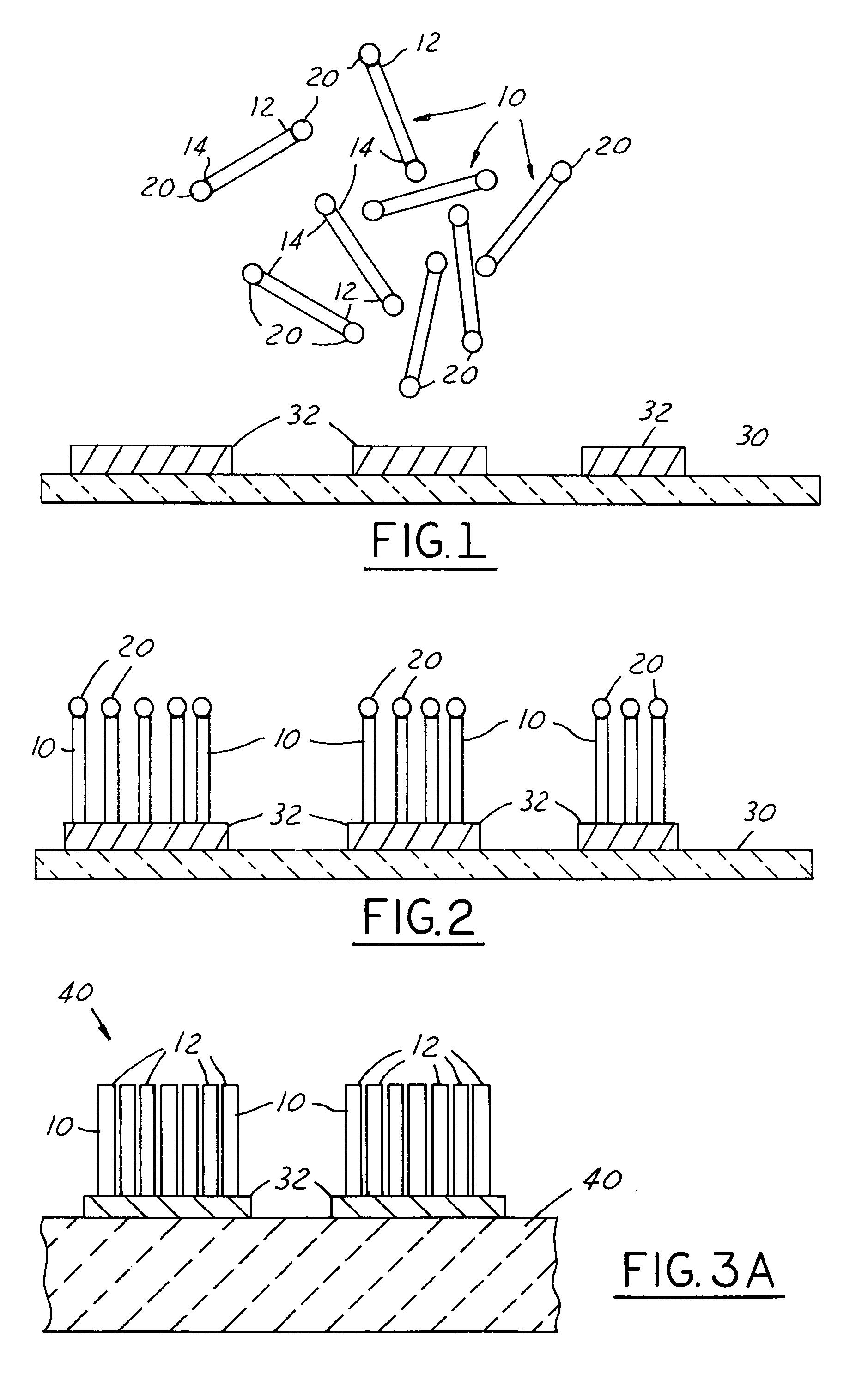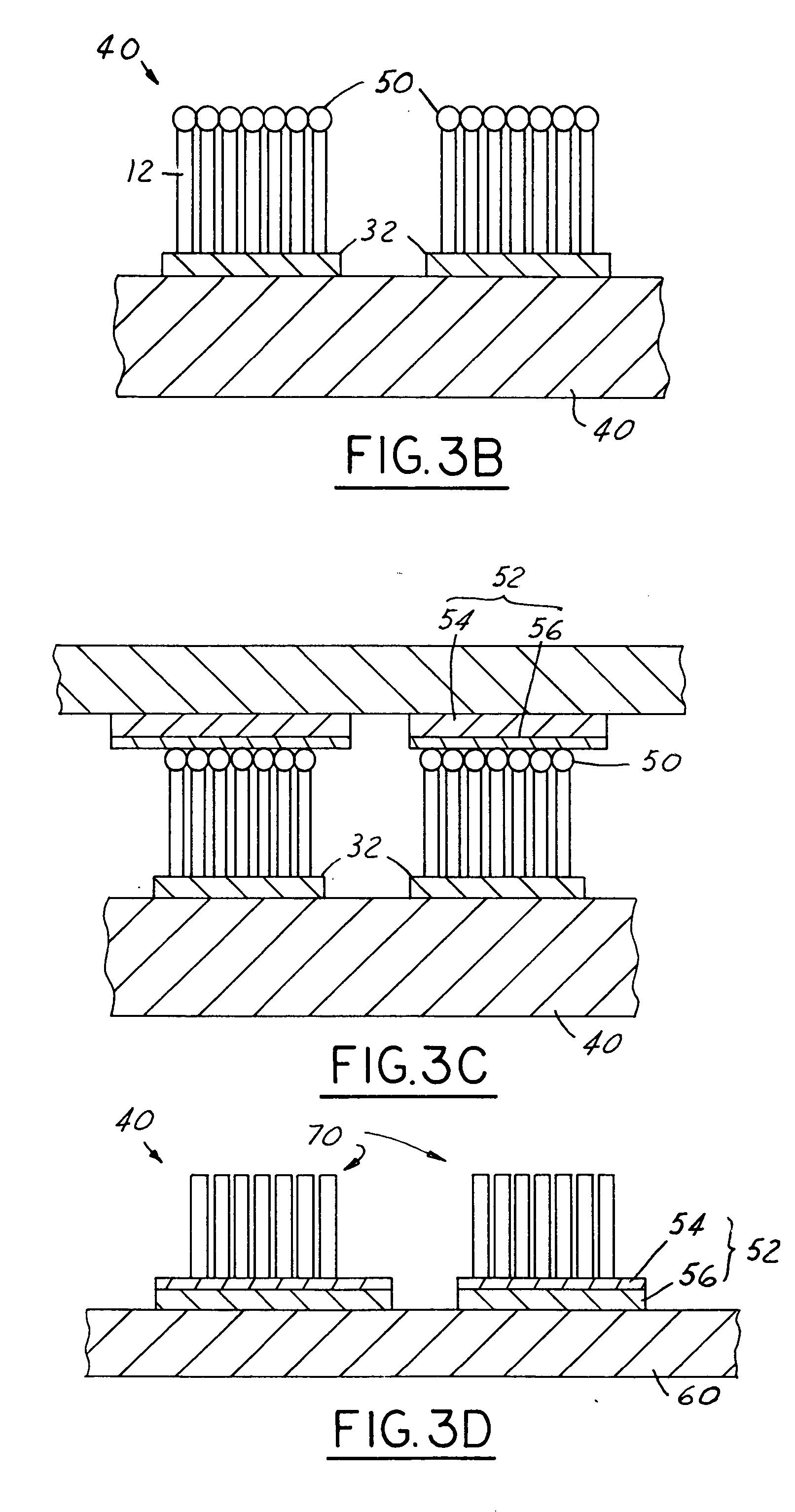Self-assembled nanometer conductive bumps and method for fabricating
a self-assembled, nanometer technology, applied in the direction of conductive pattern reinforcement, nanoinformatics, printed element electric connection formation, etc., can solve the problems of increasing the packaging and interconnection requirements of devices, damage to devices formed on wafers, and the conventional cvd method for forming carbon nanotubes is not suitable for forming conductive bumps on wafers
- Summary
- Abstract
- Description
- Claims
- Application Information
AI Technical Summary
Problems solved by technology
Method used
Image
Examples
Embodiment Construction
[0024] The present invention discloses a self-assembly method for fabricating nanometer conductive bumps and the carbon nanotube conductive bumps fabricated. The carbon nanotube conductive bumps can be used to provide electrical connection between a semiconductor device and a substrate. The carbon nanotubes are self-assembled onto metal pads situated on a substrate by first attaching chemically functional groups to the ends of the carbon nanotubes.
[0025] To achieve the present invention, the two ends of the carbon nanotubes are attached chemically functional groups and then, due to a chemical affinity existed between the functional groups and the metal pad, bond the carbon nanotubes to the metal pads. The term “self-assemble” is thus used to describe the fact that the carbon nanotubes are able to assemble themselves onto the metal pad by the strong chemical affinity existed between the chemically functional groups and the metal pad. To facilitate the present invention novel method,...
PUM
 Login to View More
Login to View More Abstract
Description
Claims
Application Information
 Login to View More
Login to View More - R&D Engineer
- R&D Manager
- IP Professional
- Industry Leading Data Capabilities
- Powerful AI technology
- Patent DNA Extraction
Browse by: Latest US Patents, China's latest patents, Technical Efficacy Thesaurus, Application Domain, Technology Topic, Popular Technical Reports.
© 2024 PatSnap. All rights reserved.Legal|Privacy policy|Modern Slavery Act Transparency Statement|Sitemap|About US| Contact US: help@patsnap.com










